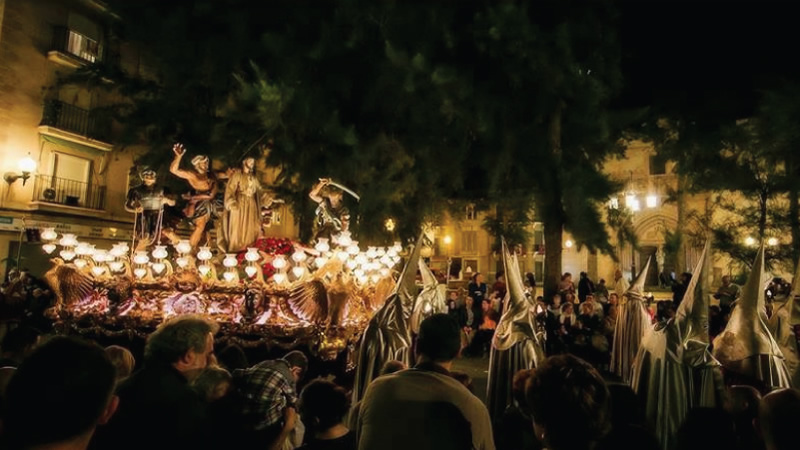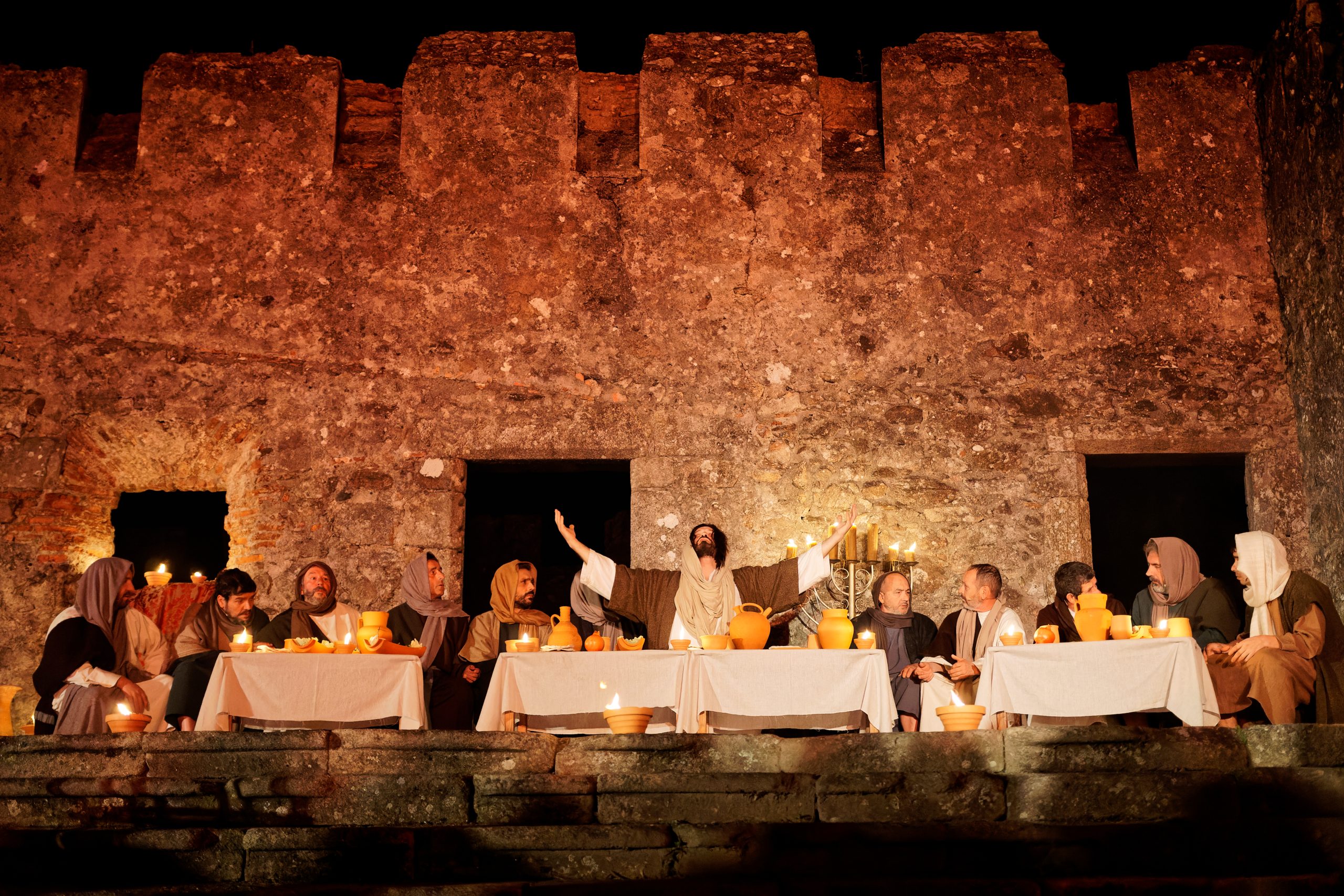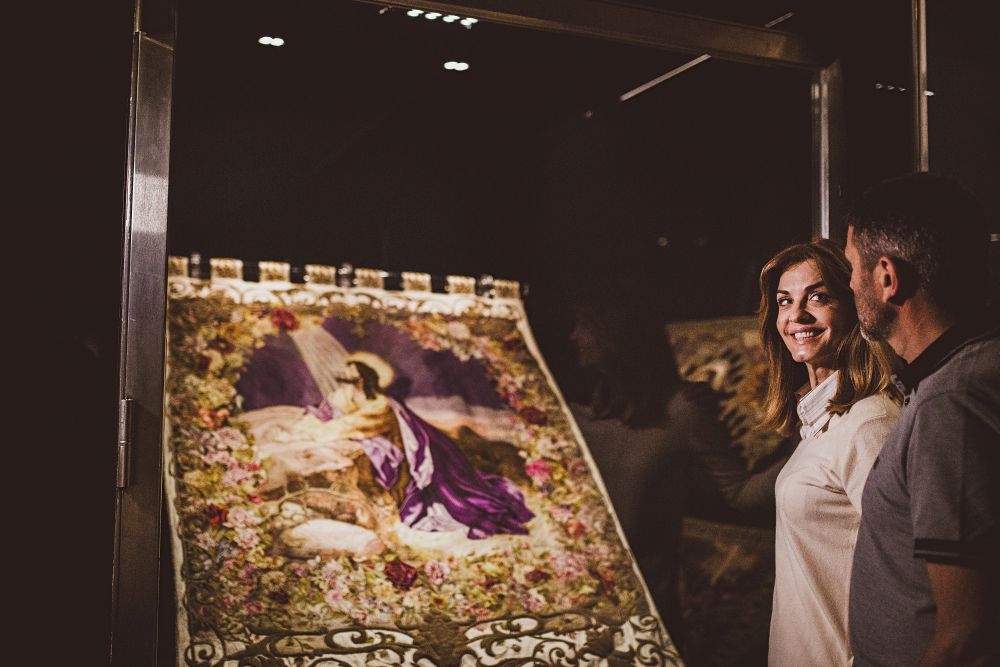
The origins of Holy Week in Orihuela are linked to the Capilla del Loreto, located on ‘Calle Mayor’ next to the Episcopal Palace. Founded in 1536, four brotherhoods had their headquarters there under the invocations of the Santísimo Sacramento, Purísima Sangre de Cristo, Nuestra Señora del Loreto and Nuestra Señora de los Desamparados. His obligations were to provide the wax that was consumed in the Cathedral and to bury those who died helpless and sentenced by justice. To perform these duties, they owned a wax factory and begged for alms in a procession that was organized on Good Friday afternoon. This procession, known as the Procession of the Blood of Christ, was joined by the citizens who had formed the Brotherhood of Our Lady of Solitude, established in the Cathedral, but with its main image in the Loreto.
A total of four steps paraded representing Our Father Jesus the Nazarene, Jesus Christ nailed to the Cross, the Descent and Our Lady of Solitude. Accompanying each insignia were the singers and musicians of the Cathedral, led by their chapel master. Since 1602, we have documentary evidence that the city council paid for the white and red wax torches used by the jurors accompanying the procession.
In 1622 an agreement was signed between the mayordomos of La Soledad and Santísimo Sacramento to avoid disagreements between the butler of both brotherhoods, when they tried to lead the procession through different itineraries. A fixed route is agreed, in addition to passing through the interior of the Cathedral and the Parish of Santa Justa, entering through one door and leaving through another.
In the mid-seventeenth century, a new procession begins to leave the Convent of the Franciscans on Good Friday morning. It begged for alms invoking Our Father Jesus Nazarene and there are differences with that of the Blessed Sacrament, which did the same in the afternoon. In 1661 they sign a concord where it is recognized that it is the latter -since time immemorial- the one that had the image of Jesus Nazarene and the other insignia of the Passion of Christ.
In the last years of the 17th century, in addition to the merchants who already collaborated in the Good Friday afternoon procession carrying the Holy Christ, the bakers and oven makers who, since 1692, have been bringing out The Oration in the Garden and the guild of farmers who in 1695 they take out the well-known step of La Diablesa, made by the image maker Fray Nicolás de Bussy.
In 1712, after the parenthesis of the War of Succession, the processions began again and in the mid-eighteenth century two new brotherhoods were created, that of Our Lady of Sorrows and the Royal Congregation of Our Lady of Pilar against Mortal Sin. The latter was held on Holy Thursday and was known as the procession of “Los Pasos de Cristo”. It consisted of seven insignia made by prestigious sculptors, including El Lavatorio -1758-, San Pedro Arrepentido -1759- and the Praetorium and Pilate’s house -1777-; all of them created by Francisco Salzillo. In this procession they already came out “armed dressed in mistakes”, horns and drums.
In the 19th century, after the parenthesis caused by the War of Independence, the Franciscan friar Mariano de la Concepción Luzón caused some steps to be renewed, the “armaos” came out, the Nuestra Señora del Pilar church was reorganized and in 1852 Our Father Jesus of the Fall -a work carried out by Salzillo in 1770- comes out on Holy Tuesday from the church of San Gregorio. Already in the middle of the century, processions are held on Palm Sunday, Tuesday, Wednesday, Thursday and Good Friday.
After the Civil War, the processions begin to shine again. From then until today, the number of steps has increased and new brotherhoods have been created, reaching a great solemnity with a massive participation of Nazarenes and the public, both local and foreign, who come to contemplate our Holy Week. All this legacy that has been accumulated over the centuries is a pride for Orihuela and can be seen in churches and convents where some images are worshiped and especially in the Holy Week Museum.




